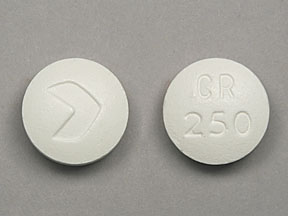
My prescription
Edit
250MG, Ciprofloxacin Hcl (14 Tablets)
Select pharmacy

CVS
$18.81
COUPON PRICE
Walmart
$3.91
COUPON PRICE
Walgreens
$10.40
COUPON PRICE
Albertsons
$15.40
COUPON PRICECiprofloxacin Hcl savings card
Show this card to your pharmacist
Walmart
$3.91
BIN
ID
PCN
GRP
019876
LH342D0A40
CHIPPO
LHX
Powered by
More prescriptions for urinary tract infection
More prescriptions for urinary tract infection
Price history for Cetraxal (brand) & Ciprofloxacin Hcl (generic)
14 Tablets, 250MG
Average retail price for Cetraxal
Average retail price for Ciprofloxacin Hcl
Average SaveHealth price for Ciprofloxacin Hcl
Our price history data is based on aggregated prescription data collected from participating pharmacies in America. Our prescription data updates daily to reflect the latest price changes. If you notice a missing data point, it means there wasn't sufficient data available to generate a monetary value for that date.
We analyzed Ciprofloxacin Hcl prices for (250MG, 14 Tablets) over the last 12 months. The average retail price was $47.16, while the average price using the SaveHealth discount card was $21.08. That's a savings of approximately 55.30% when using our Ciprofloxacin Hcl coupon.
Compared to the generic version, Cetraxal had an average price of $327.49 over the same time period. With the SaveHealth savings card, Ciprofloxacin Hcl is 93.56% cheaper on average than Cetraxal.
*Retail prices are based on pharmacy claims data, and may not be accurate when we don't have enough claims.
Ciprofloxacin Hcl dosage forms
Dosage Quantity Price from Per unit 100MG 6 Tablets $59.98 $10.00 250MG 14 Tablets $3.91 $0.28 250MG 2 Tablets $2.70 $1.35 250MG 3 Tablets $2.80 $0.93 250MG 6 Tablets $3.10 $0.52 250MG 7 Tablets $3.20 $0.46 250MG 10 Tablets $3.50 $0.35 250MG 12 Tablets $3.70 $0.31 250MG 20 Tablets $4.51 $0.23 250MG 21 Tablets $4.61 $0.22
| Dosage | Quantity | Price from | Per unit |
|---|---|---|---|
| 100MG | 6 Tablets | $59.98 | $10.00 |
| 250MG | 14 Tablets | $3.91 | $0.28 |
| 250MG | 2 Tablets | $2.70 | $1.35 |
| 250MG | 3 Tablets | $2.80 | $0.93 |
| 250MG | 6 Tablets | $3.10 | $0.52 |
| 250MG | 7 Tablets | $3.20 | $0.46 |
| 250MG | 10 Tablets | $3.50 | $0.35 |
| 250MG | 12 Tablets | $3.70 | $0.31 |
| 250MG | 20 Tablets | $4.51 | $0.23 |
| 250MG | 21 Tablets | $4.61 | $0.22 |
| 250MG | 28 Tablets | $5.31 | $0.19 |
| 250MG | 30 Tablets | $5.51 | $0.18 |
| 250MG | 40 Tablets | $6.52 | $0.16 |
| 250MG | 60 Tablets | $8.52 | $0.14 |
| 250MG | 90 Tablets | $11.53 | $0.13 |
| 250MG | 98 Tablets | $12.34 | $0.13 |
| 250MG | 100 Tablets | $12.54 | $0.13 |
| 250MG | 500 Tablets | $55.00 | $0.11 |
| 250MG | 1000 Tablets | $84.00 | $0.08 |
| 500MG | 1 Tablet | $2.66 | $2.66 |
| 500MG | 2 Tablets | $2.83 | $1.42 |
| 500MG | 3 Tablets | $2.99 | $1.00 |
| 500MG | 4 Tablets | $3.15 | $0.79 |
| 500MG | 6 Tablets | $3.48 | $0.58 |
| 500MG | 7 Tablets | $3.64 | $0.52 |
| 500MG | 8 Tablets | $3.81 | $0.48 |
| 500MG | 10 Tablets | $4.13 | $0.41 |
| 500MG | 14 Tablets | $4.79 | $0.34 |
| 500MG | 15 Tablets | $4.95 | $0.33 |
| 500MG | 20 Tablets | $5.77 | $0.29 |
| 500MG | 21 Tablets | $5.93 | $0.28 |
| 500MG | 28 Tablets | $7.07 | $0.25 |
| 500MG | 30 Tablets | $7.40 | $0.25 |
| 500MG | 40 Tablets | $9.03 | $0.23 |
| 500MG | 60 Tablets | $12.30 | $0.20 |
| 500MG | 100 Tablets | $18.83 | $0.19 |
| 500MG | 120 Tablets | $22.09 | $0.18 |
| 500MG | 500 Tablets | $71.50 | $0.14 |
| 500MG | 3000 Tablets | $299.00 | $0.10 |
| 500MG | 3600 Tablets | $353.60 | $0.10 |
| 750MG | 10 Tablets | $5.51 | $0.55 |
| 750MG | 14 Tablets | $6.71 | $0.48 |
| 750MG | 20 Tablets | $8.52 | $0.43 |
| 750MG | 30 Tablets | $11.53 | $0.38 |
| 750MG | 50 Tablets | $17.54 | $0.35 |
| 750MG | 60 Tablets | $20.55 | $0.34 |
Ciprofloxacin Hcl Warnings
The following information outlines crucial safety warnings and potential risks associated with the use of ciprofloxacin (Cipro). It is important to carefully consider these warnings and consult with your healthcare provider if you have any concerns or questions.
Tendon Inflammation and Rupture: Ciprofloxacin can increase the risk of tendonitis or tendon rupture, particularly affecting the Achilles tendon. This may occur during or several months after treatment. Discontinue use and contact your healthcare provider immediately if you experience joint or muscle pain or swelling. Higher risk factors include being over 60, using corticosteroids, having a history of transplants, engaging in high-intensity physical activity, kidney failure, or a history of tendon issues like rheumatoid arthritis.
Neurological and Mental Health Effects: This medication may elevate the risk of seizures, dizziness, tremors, and can cause nerve damage, leading to symptoms such as pain, numbness, tingling, burning, weakness, or changes in temperature or touch sensations. Individuals with a history of seizures, nerve damage, kidney problems, or those on medication increasing seizure risk are more susceptible.
Worsening Myasthenia Gravis: Ciprofloxacin can exacerbate symptoms of myasthenia gravis, such as muscle weakness and breathing difficulties. Discuss alternative antibiotics with your healthcare provider if you have this condition.
Severe Allergic and Skin Reactions: Severe allergic reactions, including anaphylaxis, are possible. Seek immediate medical attention if you experience hives, rash, swelling of the lips or tongue, or difficulty breathing.
Liver Damage: Serious liver issues, potentially leading to liver failure, can occur. Promptly seek medical help if you notice stomach pain, yellowing of the skin or eyes, unusual stool color, or dark urine. Risks include existing liver problems and being over 55.
Aortic Damage: There's an increased risk of severe aortic damage after completing ciprofloxacin treatment, particularly in older adults. Consult your healthcare provider if you have an aortic aneurysm history. Seek emergency help if experiencing severe, persistent chest, back, or stomach pain.
Infectious Diarrhea: The risk of Clostridioides difficile infection, causing severe diarrhea, is elevated. Symptoms include rapid heart rate, foul-smelling diarrhea, fever, and frequent bowel movements. Immediate medical attention is necessary if these occur.
QT Prolongation (Abnormal Heart Rhythm): Ciprofloxacin may cause QT prolongation, affecting heart rhythm. Seek urgent medical care if you experience chest pain, shortness of breath, or faintness. Risk factors include older age, electrolyte imbalances, heart issues, long QT syndrome, and medications causing QT prolongation.
Muscle, Bone, or Joint Issues in Children: Ciprofloxacin should only be used in children if no alternatives are available due to potential muscle, bone, or joint issues. The pediatrician will assess its appropriateness.
Sun Sensitivity: Increased sensitivity to sunlight or UV light can lead to sunburns. Wear sunscreen and protective clothing outdoors, even in winter or on cloudy days.
Kidney Problems: Rarely, ciprofloxacin may cause kidney issues. Maintain hydration and notify your healthcare provider if you experience lower back pain, urination difficulties, or swelling in extremities. Dehydration increases risk.
Contraindications: Avoid ciprofloxacin if you have a severe allergy to quinolone antibiotics or are taking tizanidine (Zanaflex). Consult your healthcare provider if these apply to you.
Ciprofloxacin Hcl Side Effects
Common side effects:
- Eye discomfort
- Itching
- Redness
- Tearing
- Eyelid crusting
- Sensation of something in your eye
- Blurred vision
- Bad taste in your mouth
- Sensitivity to light
Less common but important to monitor:
- White crystals in the eye
- New fungal eye infection
- New or worsening eye symptoms
- Nausea
- Diarrhea
- Vomiting
- Rash
- Abnormal liver blood test results
- Achilles pain
- Joint or muscle pain or swelling
- Seizures
- Changes in thoughts or behavior
- Nerve damage
- Major blood vessel damage
- Infectious diarrhea
Serious side effects:
- Staining of the eyes
- Swelling around the eye
- Eye pain
- Worsening vision
- Abnormal heart rhythm
- Kidney problems
- Liver issues
- Serious allergic reactions
Ciprofloxacin Hcl Interactions
Ciprofloxacin hydrochloride is an antibiotic used to treat various bacterial infections. However, it can interact with certain medications, supplements, and foods, potentially affecting its effectiveness or increasing the risk of side effects. Being aware of these interactions can help ensure safe and effective treatment.
Medications That May Interact with Ciprofloxacin:
Heart Rhythm Medications: Combining ciprofloxacin with drugs that affect heart rhythm, such as Amiodarone or Sotalol, can increase the risk of abnormal heartbeats.
Diabetes Medications: Ciprofloxacin may enhance the effects of some diabetes medications, leading to low blood sugar levels.
Warfarin: This blood thinner's effects can be intensified by ciprofloxacin, raising the risk of bleeding.
Theophylline: Used for asthma and COPD, theophylline levels can increase when taken with ciprofloxacin, potentially causing serious side effects.
Tizanidine: A muscle relaxant that, when combined with ciprofloxacin, can lead to dangerously low blood pressure and increased sedation.
Zolpidem: This sleep aid's effects may be heightened by ciprofloxacin, resulting in increased drowsiness and dizziness.
Duloxetine: An antidepressant that can reach higher levels in the body when taken with ciprofloxacin, increasing the risk of side effects.
Foods and Supplements to Avoid:
Dairy Products and Calcium-Fortified Juices: Calcium can interfere with ciprofloxacin absorption. It's advisable to avoid consuming these products alone when taking the medication.
Mineral Supplements: Supplements containing calcium, magnesium, aluminum, iron, or zinc can reduce ciprofloxacin's effectiveness. It's recommended to take ciprofloxacin at least two hours before or six hours after these supplements.
Caffeine: Ciprofloxacin can prolong caffeine's effects, leading to increased jitteriness or a racing heart. Reducing caffeine intake during treatment is advisable.
Alcohol Consumption:
While ciprofloxacin doesn't directly interact with alcohol, both can cause similar side effects like dizziness and nausea. Consuming alcohol during treatment may intensify these effects.
Recommendations:
Medication Timing: If you need to take antacids, mineral supplements, or dairy products, schedule them at least two hours before or six hours after taking ciprofloxacin to ensure proper absorption.
Monitor Blood Sugar Levels: If you're on diabetes medications, regularly check your blood sugar levels during ciprofloxacin treatment to detect any significant changes.
Limit Caffeine and Alcohol: Reducing or avoiding caffeine and alcohol can help minimize potential side effects during treatment.
Always inform your healthcare provider about all medications, supplements, and dietary habits before starting ciprofloxacin to avoid potential interactions. If you experience unusual symptoms or side effects, contact your healthcare provider promptly.
